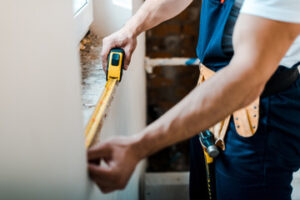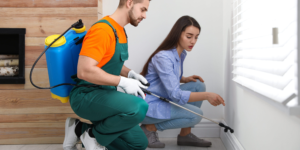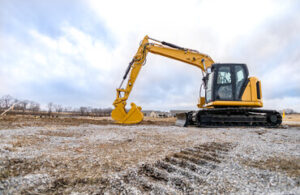Movers provide professional services for people moving to a new home or workplace. They offer a wide range of services, including packing and unpacking, disassembly and reassembly of furniture, and transporting cars. They also offer storage services.
A mover can also provide other specialized services, such as crating or climate-controlled storage. There are items that movers will not transport, such as propane tanks and certain types of large appliances. Contact Liberty Moving now!

Professional movers are experts at packing, ensuring that your belongings make it to their new home safely and securely. Their experience and skill will prevent damages to items and reduce the overall cost of the move. They also use high-quality materials to protect your items during transportation. They understand that the key to a successful move is properly labeling boxes. This process allows for easy tracking of boxes during the move and will save you time on unpacking.
Start by preparing for the move and buying supplies. Purchase enough boxes, packing tape, bubble wrap, markers and labels to meet your needs. It is helpful to have a color-coded system of labeling boxes, which makes it easier to identify where each box should go in your new house. You should also have a separate inventory sheet of all your possessions to help streamline the process.
Begin by sorting your possessions, room by room. This will save you a lot of time and energy on moving day. Make a plan for donating or selling any unwanted items and decluttering your home. Be sure to clean out the refrigerator and defrost it before moving day. Plan meals that will utilize any perishable food items. It is important to make arrangements for transporting pets, vehicles and large equipment, such as water hoses and gas or oil lawnmowers.
Consider using reusable labels and containers, which minimizes waste and encourages sustainability. There are a variety of eco-friendly packaging options, including biodegradable and soy-based labels. These labels are also available in a wide range of sizes to suit your specific needs.
It is important to choose a consistent labeling method that can be applied quickly and accurately under time constraints. Whether you use written descriptions or numbers, the consistency will prevent confusion and save you time. In addition, be as descriptive as possible when marking boxes. For example, instead of just writing “kitchen,” write “kitchen – pots and pans.” This will simplify the process and make it easier to locate items on the moving truck.
Be sure to pack all the items that you will need during the first days in your new home, such as a few days’ worth of clothes and toiletries. You should also pack a suitcase with any clothing that you will need to wear on moving day and an essentials kit for your family, such as diapers and wipes. It is also a good idea to keep an emergency bag with medical and prescription supplies, as well as your pet’s medications. These bags will be very useful in case the move is delayed or you are unexpectedly stranded. Keeping these bags close at hand will reduce the stress of the situation. It is also important to keep a copy of all your household records, such as school transcripts, medical or dental records and veterinary files.
Loading
The process of loading is one of the most crucial stages in transportation. It involves arranging the cargo in the vehicle or container to ensure that it will be safe and secure during transit. Loading also helps to optimize space and weight distribution. In addition, it helps reduce transport costs and improve overall delivery timelines. In order to make this process as efficient as possible, movers should have all necessary supplies available, such as furniture blankets, bubble wrap, packing tape, and strong boxes. Additional hands are also important. Having a family member or friend help with the move can save time and money, and it will make the process less stressful for everyone involved.
It is advisable to inspect the goods before starting the loading process. This will help prevent any damage or loss of goods during transport. This inspection should be done by a member of the supervisory team or logistics officer. The inspection should include a comparison of the goods on hand with the data recorded in the shipping documents. In addition, the vehicle should be inspected to ensure that it is suitable for the transport of the goods.
Loading and unloading can be dangerous, so it is essential that employees follow safety procedures. This will help keep them safe and healthy, which is in the best interests of the company. It is also important to train employees in proper loading techniques. A good way to do this is by having a demo car, which can demonstrate how the equipment works.
Many moving companies have flexible schedules, which allows them to accommodate their customers’ needs. This means that they can work in the mornings or evenings, depending on the customer’s preferences. This flexibility is useful for those who have small children or pets. It is also a great option for people who need to move during school holidays or over the weekend.
It is important that movers are not exposed to excessive noise or vibration during the loading process. These factors can cause hearing loss and other health problems. This is why it is a good idea to use earplugs while working. In addition, it is important to wear appropriate protective clothing and footwear for the task at hand. In addition, a risk assessment should be performed to identify potential hazards and controls. These should be clearly communicated to employees to avoid injuries. Ideally, loading and unloading should be done on level ground and away from pedestrian traffic routes. In addition, systems should be in place to prevent vehicles from driving away while they are being loaded or unloaded. If this is not possible, the loading area should be segregated from the public.
Transportation
The ability to move or be moved is an essential human quality, and transportation, the system of moving people and goods from one place to another, is a central part of that capacity. It is also a vital business process, as it enables the efficient flow of materials and money across continents. The industry is complex, and the choices made in it determine everything from costs to delivery speeds and environmental impacts.
The field of transportation encompasses the infrastructure, vehicles, and operations involved in moving people or goods from one location to another. It involves the movement of cargo over land (rail and road), air, water, cable, pipelines, and space. It is a global network that trades more than $18 trillion worth of goods every year.
Transport is a complex process, and the ways in which it is performed vary greatly between regions and industries. The choice of the most suitable method depends on a company’s needs, the size and type of its fleet, the value of the goods being shipped, and the time frames involved. The logistics of transport have been shaped by technological advances and by the growth of international trade.
In general, the cost of transportation is proportional to the distance traveled and the volume of cargo carried. However, there are also fixed costs that do not depend on particular transportation movements. These include administration, sales, financing, rents, insurance, depreciation, and taxes. There are also variable costs that depend on the actual transportation movements. These include fuel and labor costs.
Road transportation is the dominant mode of freight transport in many countries, especially in Europe. It is used for both bulk and package freight. Bulk cargo usually consists of raw or unfinished products such as metals, grains, and coal. It is often stored in containers or grouped together and scheduled for shipping by rail, air, or ocean. Package freight, on the other hand, is merchandise that is not too large or too heavy to be handled by individuals. It is usually stacked on wooden or metal platforms known as pallets. It may be loaded or unloaded by forklift trucks, cranes, or various conveyor systems.
In the United States, passenger transportation is divided into public and private transport. Public transport consists of scheduled services that operate on regular routes, such as buses or trains. It is usually cheaper than private transport and has a lower environmental impact, but it can be slower than some other modes of transportation. Private transportation is the use of personal vehicles such as cars and taxis. It offers flexibility and convenience but can contribute to traffic congestion and air pollution. In addition, there are specialized forms of transport such as ambulances and military vehicles. The Surface Transportation Board has a limited role in overseeing interstate transportation.








